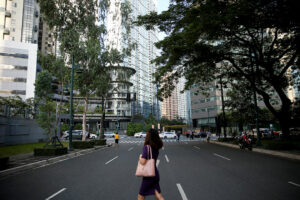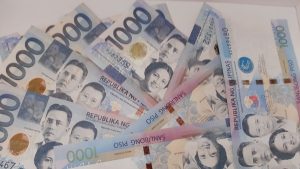By Luisa Maria Jacinta C. Jocson, Senior Reporter
THE PHILIPPINE banking system’s nonperforming loan (NPL) ratio hit a five-month high in April, preliminary data from the Bangko Sentral ng Pilipinas (BSP) showed.
Banks’ bad loan ratio rose to 3.39% in April from 3.3% in March. However, it eased from 3.45% a year ago.
This was the highest bad loan ratio in five months or since the 3.54% logged in November 2024.
Data from the BSP showed that soured loans inched up by 0.6% to P519.23 billion as of April from P516.12 billion a month prior.
Year on year, bad loans jumped by 8% from P480.65 billion in the same month in 2024.
Loans are considered nonperforming once they remain unpaid for at least 90 days after the due date. These are deemed risk assets since borrowers are unlikely to pay.
BSP data also showed the total loan portfolio of the banking system stood at P15.34 trillion as of end-April, down by 1.9% from P15.63 trillion as of end-March. On the other hand, it rose by 10% from P13.94 trillion a year ago.
Past due loans went up by 1.1% to P653.26 billion in April from P646.37 billion in March. It likewise increased by 5.7% from P618.04 billion a year earlier.
This brought the past due loan ratio to 4.26%, higher than 4.14% in March but lower than 4.43% in the same period in 2024.
Restructured loans edged higher by 0.1% to P311.66 billion in April from P311.48 billion month on month. Year on year, it rose by 7.3% from P290.37 billion.
Restructured loans accounted for 2.03% of the industry’s total loan portfolio in April, higher than 1.99% in the month prior but lower than 2.08% in April 2024.
Banks’ loan loss reserves stood at P493.79 billion, up by 0.7% from P490.56 billion a month ago and higher by 4.8% from P471.35 billion a year earlier.
This brought the loan loss reserve ratio to 3.22% in April, higher than 3.14% last month but lower than 3.38% a year ago.
Lenders’ NPL coverage ratio, which gauges the allowance for potential losses due to bad loans, stood at 95.1% in April from 95.05% in March and 98.07% a year prior.
“The uptick in NPL ratio likely reflects a lagged response to tighter financial conditions, elevated interest rates, and persistent cost of living pressures on both households and businesses,” John Paolo R. Rivera, a senior research fellow at the Philippine Institute for Development Studies, said.
“While still relatively low and manageable, the rise signals early signs of stress, especially among more vulnerable borrowers, such as MSMEs (micro, small and medium enterprises) and lower-income consumers. In my opinion, it is not yet a cause for alarm, but it is a signal for banks to remain vigilant in their credit risk management.”
Rizal Commercial Banking Corp. Chief Economist Michael L. Ricafort said the slight uptick in NPLs is seen amid slowing growth in bank loans.
Bank lending rose by 11.8% year on year to P13.19 trillion in March, its slowest pace in four months, as loan growth for production activities and consumers eased.
Reinielle Matt M. Erece, an economist at Oikonomia Advisory and Research, Inc., said the rise in unemployment could also be a factor behind the rise in NPLs.
“On the consumers’ side, higher unemployment these past few months may indicate slower earnings growth, making it harder to pay their loans. In addition, slow demand and business growth may also impact business cash flows during the period,” he said.
The jobless rate rose to 4.1% in April from 3.9% in March and 4% a year ago, the latest data from the local statistics authority showed.
This was equivalent to 2.06 million unemployed Filipinos in April, higher than 1.93 million a month ago and 2.04 million the year prior.
“If the trend continues over the next few months, it could indicate that some sectors of the economy are experiencing difficulty servicing debt, possibly due to slower-than-expected income recovery or tightening liquidity,” Mr. Rivera said.
“Monetary authorities and banks will likely monitor this closely. If credit quality deteriorates further, it could prompt more cautious lending behavior and affect the overall pace of credit growth, which in turn could have broader implications for economic recovery and domestic consumption.”


















